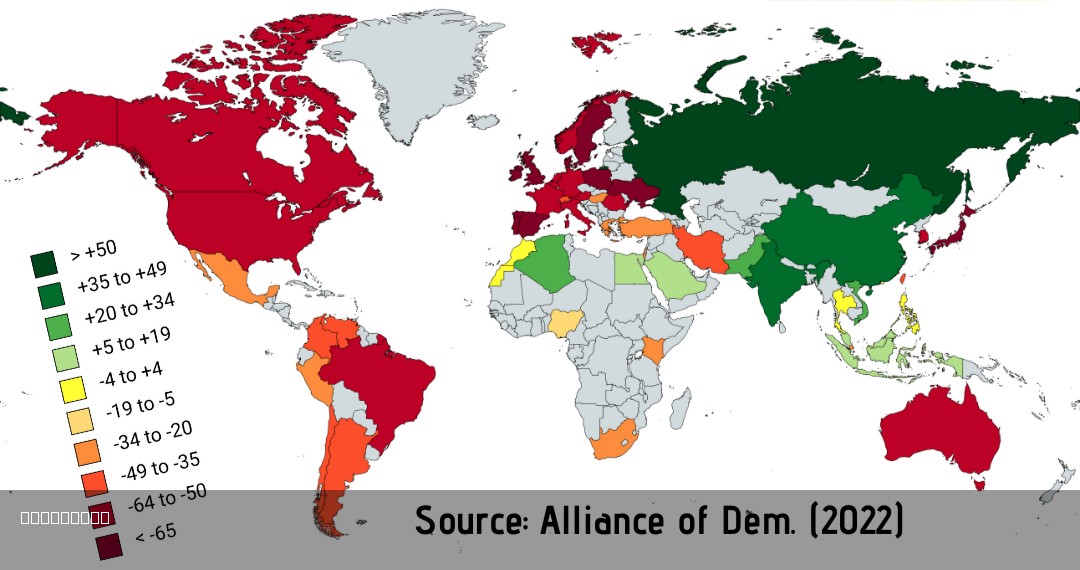Public Opinion on Russia 2022 Map


Marcus Rodriguez
Historical Geography Expert
Marcus Rodriguez specializes in historical cartography and geographic data analysis. With a background in both history and geography, he brings unique...
Geographic Analysis
What This Map Shows
This map visualizes public opinion on Russia in 2022, illustrating how sentiments varied across different countries and regions. The data showcased provides insights into how global perspectives on Russia have shifted, particularly in light of significant geopolitical events such as the ongoing conflict in Ukraine. What’s fascinating is how public opinion can serve as a snapshot of the broader geopolitical climate, reflecting attitudes shaped by historical relations, cultural ties, and current events.
Deep Dive into Public Opinion on Russia
Public opinion is a powerful tool that reflects the collective sentiments of a population regarding various issues, including foreign policy, national security, and international relations. When it comes to Russia, opinions have been notably polarized, especially in recent years. Various factors contribute to this complex landscape, including historical legacies, media portrayals, and the immediate impacts of political actions.
In 2022, public sentiment towards Russia was heavily influenced by its military actions in Ukraine, leading to a sharp increase in anti-Russian sentiment in many Western countries. Interestingly, this shift was not uniform. For instance, in countries like Poland and the Baltic states, there was a significant uptick in negative perceptions of Russia, driven by historical hostilities and regional security concerns. Conversely, nations with closer ties to Russia, such as Belarus and some Central Asian countries, exhibited a more favorable opinion.
Moreover, public opinion can often be categorized into several dimensions: support for sanctions, perceptions of military threat, and views on cultural ties. For example, in Western Europe, a large majority supported economic sanctions against Russia as a response to its actions in Ukraine. This reflects a broader trend of solidarity with Ukraine and a desire to counteract perceived threats to European security.
On the other hand, in countries like China and India, where strategic partnerships with Russia are prioritized, public opinion tended to be more favorable. This divergence highlights how geopolitical alliances can shape perceptions in ways that transcend mere sentiments.
Statistics indicate that in 2022, around 70% of respondents in the United States held a negative view of Russia, a significant increase from previous years. In contrast, countries like Turkey maintained a more neutral stance, balancing between Western alliances and their historical ties to Russia. This dichotomy raises intriguing questions about the future of international relations and the potential for shifts in alliances based on public sentiment.
Regional Analysis
Examining the map regionally reveals stark contrasts in public opinion. In North America and much of Western Europe, the consensus is predominantly negative towards Russia, influenced by a combination of media narratives and political leadership. The United Kingdom, for instance, displayed an overwhelming majority opposing Russia’s actions, reflecting a broader sentiment of distrust that has been exacerbated by historical events such as the poisoning of dissidents and cyberattacks.
Conversely, in Eastern Europe, while anti-Russian sentiment is high, there are variations based on historical contexts. Countries like Hungary showed a more mixed response, with a significant portion of the population acknowledging economic ties with Russia despite political rhetoric against it. This duality can be seen as a reflection of the complex historical narratives that shape national identities and opinions.
In Asia, the map illustrates a varied landscape. Countries like Vietnam and India maintain a nuanced approach, often weighing their historical ties against current geopolitical realities. Public opinion in these nations is less influenced by Western narratives, showcasing how regional history can shape perspectives on Russia differently than in the West.
Significance and Impact
Understanding public opinion on Russia is crucial for several reasons. Firstly, it directly impacts diplomatic relations and international negotiations. Countries with a negative view of Russia may push for stricter sanctions or military support for nations like Ukraine, while those with a favorable view might align more closely with Russian interests.
Secondly, public opinion can influence domestic policies, especially in democracies where leaders are responsive to the sentiments of their constituents. As seen in the United States and Europe, growing anti-Russian sentiment has led to increased military spending and a reevaluation of defense strategies in light of perceived threats.
Lastly, monitoring these opinions provides insights into future trends. As the geopolitical landscape continues to evolve, shifts in public sentiment can foreshadow changes in alliances and international cooperation. For instance, if anti-Russian sentiments persist, we might see tighter sanctions and a more cohesive Western bloc against Russia.
In conclusion, the public opinion on Russia in 2022 not only reflects immediate reactions to current events but also highlights the deep-rooted historical ties and geopolitical alliances that shape our world today. As we move forward, understanding these dynamics will be essential in navigating the complexities of international relations.
Visualization Details
- Published
- August 6, 2025
- Views
- 104
Comments
Loading comments...